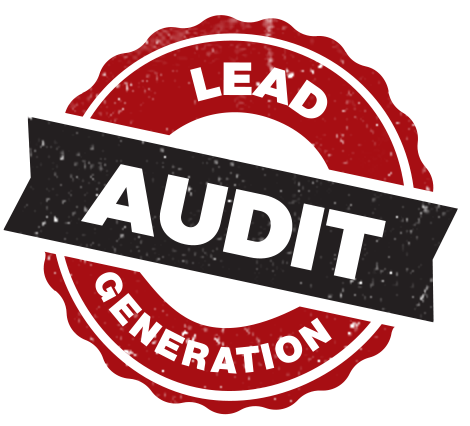
I’d like you to take a look at one of our recently launched client websites. It’s for a concrete leveling company in Denver, Colorado.
Before I give you the link, I’d like to tell you a few things we did with this website. It’s a bit different than our other websites, and I believe some of the features are worth noting before you go exploring.
- Instead of a static image for the header, we inserted the client’s existing video of tradesmen leveling concrete. This is an awesome way to grab attention.
- The “How Concrete Leveling Works” section of the homepage distills the benefits of concrete leveling into easily digestible numbers. The reader immediately understands the advantages of the service.
- A powerful Identity is present throughout the website. It conveys why concrete leveling is better than other solutions, AND why the client is the best choice for concrete leveling in the area. Two birds; one stone.
Here’s the link: https://www.cretejack.com/
If you need help with your internet marketing, get in touch. Pick up the phone and call (817) 416-4333, or use the chat function to talk to someone right now.
P.S. Don’t forget… MYM just launched a groundbreaking PPC program called No-Risk PPC Lead Generation.
To recap:
- You pick the amount of leads—no budgeting necessary.
- You pay for the leads only AFTER we supply them.
- Your cost per lead will NEVER exceed $200. Ever.
For all the details, email the PPC Team, or head on over to our No Risk PPC information page.

In my last post, I mentioned that it’s possible for No-Risk PPC Lead Generation to finance the growth of your company.
In a nutshell…
You start with a certain amount of leads—however many you want. You make sales off those leads and put a portion of that money back into your PPC campaign. Every month, you increase the number of leads, and therefore increase your sales.
Wash. Rinse. Repeat. To infinity… and beyond.

Buzz Lightyear approves.
Now, let’s break down the actual numbers.
Say you’re a contractor that wants to start with 60 PPC leads and steadily increase that number every month. Here’s how that would go…
Month 1:
- 60 leads x $200 per lead = $12,000.
- Note: $200 per lead is the MAXIMUM you will spend. But we’ll go with it for this first month.
- Out of those 60 leads, let’s say you close 25%. That’s 15 sales.
- Your average sale is $10,000. Fifteen sales times $10,000 is $150,000.
- Result: You invest $12,000 and sell $150,000. (ROI = 1,150%)
- If your gross margins are 50%, that means you make $75,000 in gross profit; subtracting out lead costs and sales commissions should still NET you $25k to $40k.
- Invest SOME of those profits into more leads (and possibly more infrastructure to handle more leads) the next month…
Month 2 (your campaign is more optimized, so your cost per lead is lower):
- 100 leads x $170 per lead = $17,000.
- Out of those 100 leads, you close 25%. That’s 25 sales.
- Twenty-five sales times $10,000 is $250,000.
- Result: You invest $17,000 and make $250,000. (ROI = 1,370.59%)
- Keep going! Ramp it up even more!
Month 3 (your cost per lead is now even LESS):
- 160 leads x $140 per lead = $21,000.
- Out of those 160 leads, you close 25%. That’s 40 sales.
- Forty sales times $10,000 is $400,000.
- Result: You invest $21,000 and make $400,000. (ROI = 1,804.59%)
- Boom. Once that snowball starts rolling downhill, it keeps gaining steam and getting bigger.
You might be saying, “But Rich, my close rates aren’t that high.” Or, “But Rich, my average sale is $8K, not $10K.”
Doesn’t matter. Just adjust the numbers. Start with a smaller number of leads. Then work your way up.
I’ll do a more conservative example to prove it still works…
Month 1:
- 30 leads per month x $200 per lead = $6,000.
- Out of those 30 leads, you close 15%. That’s “4.5” sales. But let’s round down to 4 sales in keeping with our “conservative” approach to the numbers.
- At an $8,000 sales average, that comes to $32,000.
- Result: You invest $6,000 and make $32,000. (ROI = 433.33%)
Then follow the steps in the first set of examples above for months two, three, and beyond.
If you want to know how many PPC leads are available in your market, email us at noriskppc@mymonline.com.
We’ll run the numbers to give you a solid idea of how many leads you can get per month. We’ll also help you determine the optimal number of leads at which to start, so you can build your way up comfortably… and profitably.
P.S. Want to run your own numbers? Visit the No-Risk PPC Lead Generation page. A little more than halfway down the page is a sales calculator. Input your numbers to instantly generate your estimated sales with No-Risk PPC.

Last week, I wrote a post titled: “The question the smartest remodelers ask about PPC advertising.”
That question is “What’s the maximum number of leads you can get me?”
(If you want the answer, send an email to noriskppc@mymonline.com. We’ll take a look at your services and location to crunch the numbers and give you an estimate.)
I went on to tell you about some of our biggest PPC clients, including a company that spends up to $230,000 a month on pay-per-click advertising.
Now, let me tell you the fun little story behind the company that spends that much…
I started working with them in 2011. I went up to their office and met with them for a “kick off” meeting like I always do, where we discuss strategies and budgets.
One of their budget items, of course, was PPC. At the time, the company was doing about $40 million a year and had a marketing budget of roughly $4 million.
I scratched my head when I looked at their PPC number for the previous month. It was $20,000.
“$20,000?” I asked, “Why is this number so LOW?”
They responded that that’s just how much they had budgeted. It was $20,000 a month in peak months (seasonal business), and only $10,000 for non-peak months.
When I asked how they came up with that number, they said it was “just how much they allocated.” Basically, it was an arbitrary number.
So I had them pull the records from the previous month, and asked them if the $20,000 lasted the whole month, or if they “ran out.”
Turns out, they had “run out” of PPC money to spend on the 11th of the month.
In other words, from the 12th to the 31st of the month, they spent NOTHING on PPC. Zero. Nada. Zilch. They had no budget left.
Then I had them research what their cost per lead and conversion rate on their PPC leads had been.
Turns out, PPC was their absolute LOWEST cost per lead of ANYTHING they were doing… and the conversions were actually HIGHER than average compared to their other lead sources!

Then I found out (to my horror) that they were only running the PPC campaigns in less than HALF of the geographic area they serviced.
Why? Obviously, they hadn’t allocated enough budget.
Here’s what I said to them, word for word:
“ARE YOU CRAZY?! You should spend every possible PENNY that you can on PPC… BEFORE you spend a single cent on anything else…and I mean ANYTHING else!”
They got the point. They immediately shifted their budget out of less productive things to free it up to “max spend” on PPC.
Over the next six years, their company continued to grow (to well over $100 million), and as their footprint grew, their PPC budget grew as well… all the way up to $230,000 a month.
Honest to goodness, that’s a true story.
And here are the takeaways:
- Not everyone “gets” the power of PPC right away—even really smart people running really successful companies. That’s okay.
- You can grow into PPC. Yes, “unlimited” is the best number of leads to buy. But start with 50 or 100 a month—we’ll help you grow to as many as exist.
If your entire marketing budget is only $20,000 a month, the thought of spending all or most of it on PPC might be frightening.
But realistically, if you stagger your lead flow (50 the first month, 100 the 2nd month, 150 the 3rd month, etc.), you can just let the sales from PPC finance the growth of your company.
In other words…
Instead of having a $20,000 budget and a $2-million company, why not have a $40,000 marketing budget (half in PPC, the other half in whatever you’re already doing) and have a $4-million company?
Boom, you just doubled your sales. And there’s no risk. For proof, visit MYM’s No-Risk PPC Lead Generation page.
Next post, I’ll run the actual numbers on how No-Risk PPC Lead Generation can finance the growth of your company.

Remember when Thanksgiving and Black Friday were their own separate things? You know, before Black Friday bled into Thanksgiving Thursday?
These two days used to synergize so well.
Here’s how things would go:
- 9am-4pm: Shove that 20lb turkey in the oven; get side dishes and dessert prepared.
- 5pm: Sit down to dinner with the family.
- 6:30pm: Trudge your bloated self to the living room to watch a little football. (That second piece of pumpkin pie? Not your best idea.)
- 7:30pm: Get annoyed when Uncle Bob starts talking politics after one too many beers.
- 8pm: Kick Uncle Bob out.
- 8:30: Clean up.
- 10pm: Go to bed to get plenty of rest for the 5am store opening times on Black Friday.
But over the past few years, this timeline has changed for some families.
Black Friday slowly started creeping backward, truncating Thanksgiving Day family festivities.
5am Friday openings became 2am Friday openings. Then 12am Friday openings. Then 10pm THURSDAY openings.
Today, many brick-and-mortar retailers open as early as 6pm on Thanksgiving Day. Some even earlier than that.
You can almost feel one of the only family-oriented holidays left being slowly killed by commercialism.
If you’re upset about that, I’ve got news for you: retailers don’t care. And when I look at it from a business perspective, I can’t say I blame them.
Don’t get me wrong…
I LOVE spending time with my family on Thanksgiving. I LOVE watching the Dallas Cowboys with my sons every year. And camping in front of Best Buy for hours, days, or weeks to get deal on a TV is not my thing. But I also understand that companies like Best Buy now need to take drastic action to stay afloat.
Consider this: Nine brick-and-mortar retailers have filed for bankruptcy in 2017.
These are big names, too, like Sears, Macy’s, and J.C. Penny. The places you’ve shopped at for decades.
Meanwhile, Amazon’s sales have shot from $16 billion to $80 billion since 2010.
To stay competitive, brick-and-mortar stores have had to get cutthroat. And that means carving time out of Turkey Day.
Though in-store sales are slumping, Thanksgiving is now a HUGE day for stores. In 2015, 35 million people went out and shopped on Thanksgiving, resulting in billions of dollars in sales.
In addition, data shows 70% of consumer spending happens at the first two stores people visit on Thanksgiving/Black Friday.
So you can see why Thanksgiving is too important for brick-and-mortar retailers NOT to be open on.
These companies don’t care if some people think they are ruining the one day a year meant for family bonding. Those aren’t the people these businesses are targeting.
The ones they ARE targeting are those who don’t mind hitting up some stores for some deals after chowing down on some pumpkin pie and watching a little pigskin.
This strategy of “exclusion” is smart marketing. And it’s a tactic contractors should copy.

Focus on YOUR market.
Don’t worry about the rest.
Don’t worry about alienating people who wouldn’t buy from you anyway. You’ll never get their business, so who cares?
Instead, focus your marketing on YOUR customer demographic. Be specific about who you are, what you do, who you work for, and who you DON’T.
You can do this in a number of ways. Here are a few examples:
- Be up-front about having higher prices (and therefore higher quality). You’ll filter out the price shoppers, while landing the high-end affluent clients you want.
- Admit you may not be the fastest (but only because you take the time to do everything perfectly). You won’t have to worry about taking calls from homeowners who want a project done yesterday.
- If you do have lower prices, shout it from the rooftops. Spirit Airlines markets itself as a low-cost airline to attract clientele that doesn’t care about pretentious extras and “flying fancy.” If you do this, though, make sure you detail WHY you have lower prices. Do you keep your overhead low? Do you buy directly from the manufacturer? If so, say so. You want people to know that your prices are lower because you’re smart… not because you sacrifice quality.
- Make it abundantly clear that ALL you do is kitchen remodeling… or windows… or commercial roofing… or contractor marketing (wink, wink). You won’t have to waste time talking to people who want what you don’t offer.
Something to chew on before today’s Big Dinner.
Happy Thanksgiving!














